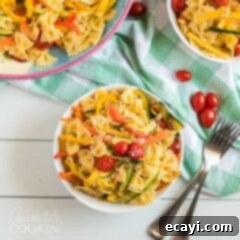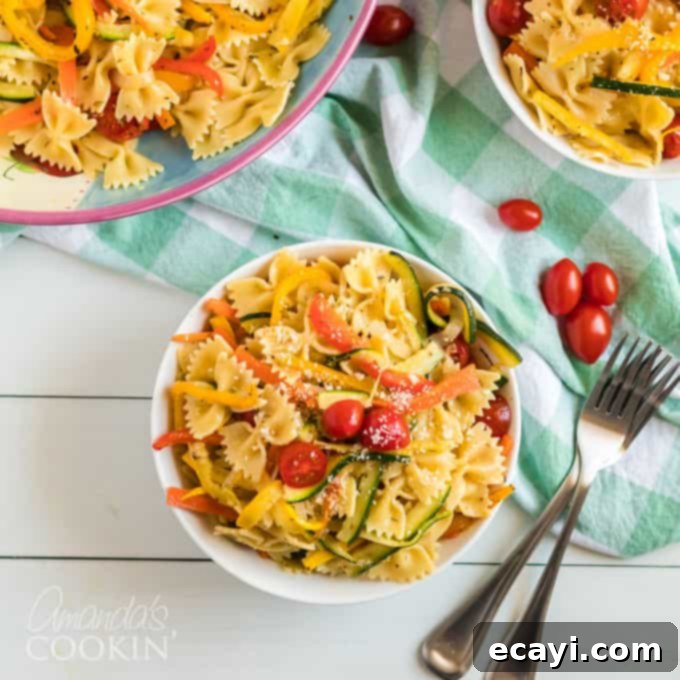The Ultimate Guide to Fresh & Flavorful Pasta Primavera: A Celebration of Seasonal Vegetables
Since its delightful emergence in the 1970s, Pasta Primavera has captivated palates as a quintessential dish that celebrates the bounty of fresh vegetables perfectly harmonized with comforting pasta. The very name “Primavera”, meaning “spring style” in Italian, alludes to its essence: a vibrant, light, and refreshing meal bursting with seasonal produce. More than just a recipe, it’s an ode to the garden, a culinary concept that embraces the freshest ingredients available, creating a dish that is both simple to prepare and incredibly satisfying for the whole family.
Seeking an inspiring idea for your next Meatless Monday? Look no further! This Pasta Primavera recipe is an exceptional choice, offering a delicious and nutritious way to enjoy a plant-forward meal without compromising on flavor or heartiness. It’s a testament to how humble vegetables, when prepared with care, can truly shine as the star of the plate.
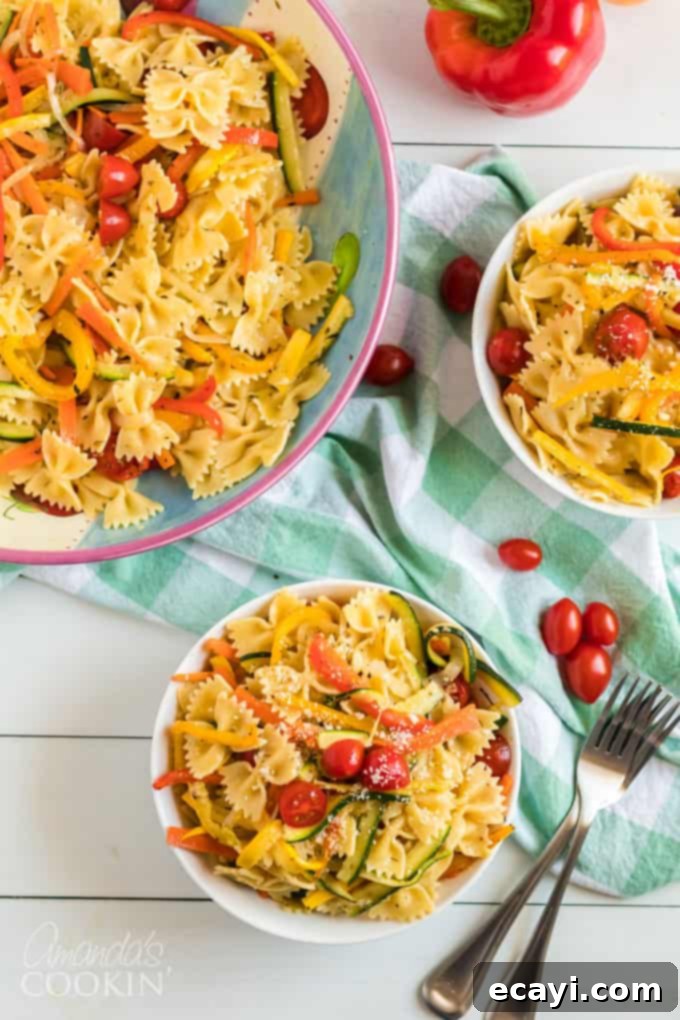
Mastering the Art of Pasta Primavera
While the name “Primavera” might conjure images of blossoming spring gardens, the beauty of this dish lies in its adaptability. You don’t have to wait for spring to enjoy a magnificent Pasta Primavera! The core principle is simply to use fresh, high-quality vegetables. While visiting a local farmer’s market for peak-season produce truly embodies the spirit of primavera, you can still create a fantastic version year-round by choosing the freshest available vegetables from your grocery store. The key is vibrancy, color, and crispness, ensuring every bite is packed with natural goodness.
The preparation of the vegetables for this recipe employs a technique called julienning, which involves cutting them into thin, matchstick-like strips. This method is not just for aesthetic appeal; it ensures that all vegetables cook evenly and quickly, achieving a tender-crisp texture that complements the pasta beautifully. Except for the delicate cherry tomatoes, all the core vegetables will undergo this precise cut. Once prepped, these colorful ribbons of goodness are roasted in the oven, a cooking method that coaxes out their natural sweetness and adds a delightful depth of flavor. This roasting process is crucial as it eliminates the need for a heavy, traditional tomato sauce. Instead, all the rich, complex flavors come directly from the caramelized vegetables themselves, resulting in a lighter, yet incredibly flavorful and satisfying meal. The simplicity of the “sauce” – essentially a light coating created by olive oil, herbs, and a touch of pasta water – allows the true taste of each vegetable to come through, creating a harmonious and fresh culinary experience.
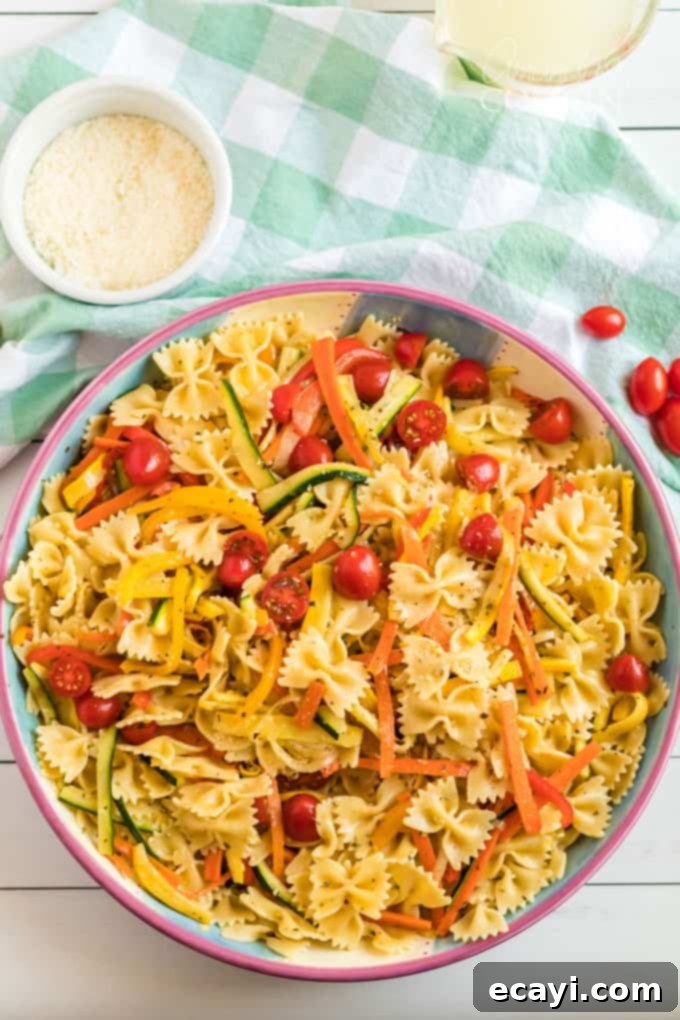
Essential Ingredients for a Perfect Primavera
Crafting an exquisite Pasta Primavera begins with selecting the right ingredients. Each component plays a vital role in building layers of flavor and texture, from the crisp vegetables to the perfectly cooked pasta and the aromatic seasonings. Here’s what you’ll need to bring this delightful dish to life:
- **Carrots, cut into thin strips:** These add a touch of sweetness and vibrant color, and become tender-crisp when roasted.
- **Zucchini, cut into thin strips:** A classic primavera inclusion, zucchini offers a mild flavor and soft texture.
- **Yellow squash, cut into thin strips:** Similar to zucchini, yellow squash provides another layer of color and tender sweetness.
- **Onion, cut into thin strips:** Onions contribute an aromatic base and a savory depth when caramelized.
- **Yellow bell pepper, cut into thin strips:** Bell peppers add bright color, a subtle sweetness, and a lovely crunch.
- **Red bell pepper, cut into thin strips:** Complementing the yellow bell pepper, the red variety offers more sweetness and a deeper hue.
- **Olive oil:** The foundation for roasting, extra virgin olive oil enhances flavor and ensures even cooking.
- **Kosher salt:** Essential for seasoning, kosher salt brings out the natural flavors of the vegetables.
- **Freshly ground black pepper:** Adds a piquant kick and aromatic warmth.
- **Dried Italian seasoning or Herbes de Provence:** A blend of classic Mediterranean herbs that infuse the vegetables with fragrant, earthy notes.
- **Farfalle (bowtie pasta) or penne pasta:** These pasta shapes are excellent choices because their nooks and crannies, or broad surfaces, expertly capture the roasted vegetables and the light sauce. Other robust shapes like orecchiette or fusilli would also work wonderfully. The key is a pasta that can stand up to the vegetables and maintain its texture.
- **Cherry tomatoes, cut in half:** Added fresh at the end, these burst with juicy sweetness and acidity, providing a fresh contrast to the roasted elements.
- **Grated Parmesan:** A finishing touch that adds a salty, umami depth and creamy richness. For a vegetarian option, ensure you use a Parmesan made without animal rennet.
When selecting your vegetables, look for those that are firm, unblemished, and brightly colored. Freshness is paramount for a dish where the vegetables are the true heroes. The combination of sweet carrots, tender zucchini and squash, savory onion, and vibrant bell peppers creates a balanced flavor profile that is both comforting and exciting. This thoughtful selection ensures that every forkful of Pasta Primavera is a delightful experience.
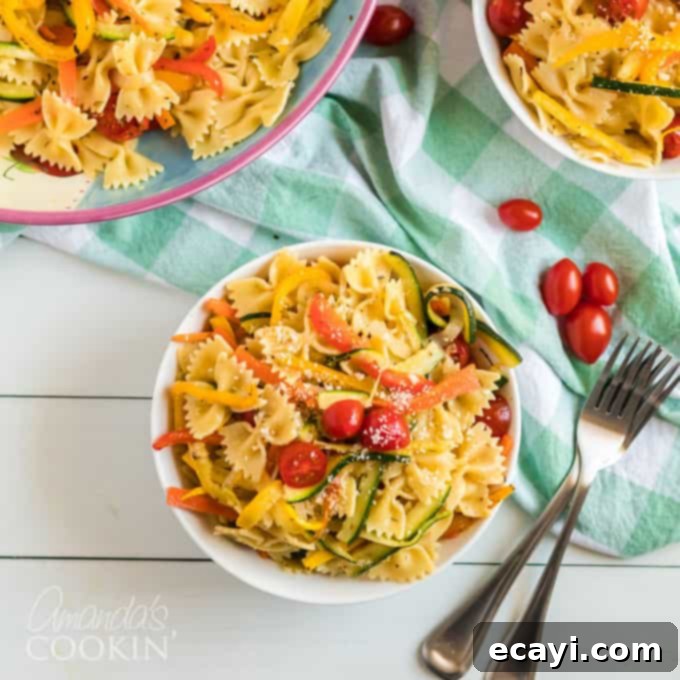
Helpful Kitchen Tools for Effortless Cooking
Having the right tools can make the process of creating Pasta Primavera even more enjoyable and efficient. These are some of the essential kitchen implements that will assist you in preparing this delightful dish:
- Chef’s knife: A sharp chef’s knife is indispensable for precisely julienning your vegetables, ensuring uniform cuts for even cooking.
- Cutting board: A sturdy cutting board provides a stable surface for all your chopping and slicing needs.
- Roasting/baking pans: You’ll need at least one, and preferably two, large, heavy baking sheets to roast the vegetables without overcrowding them, which is key for proper caramelization.
- Tongs: Ideal for tossing vegetables with oil and seasoning, and for flipping them during roasting to ensure even browning.
- Pasta fork: A pasta fork or spaghetti server makes it easy to handle and serve the cooked pasta without crushing the delicate vegetables.
- Colander: Essential for draining your pasta thoroughly after cooking, ensuring your dish isn’t watery.
Crafting Your Own Delicious Pasta Primavera: Step-by-Step Guide
Follow these simple steps to create a vibrant and flavorful Pasta Primavera that will impress your family and friends. (You can print the full recipe card at the end of this post for your convenience.)
- **Prepare for Roasting and Boiling:** Begin by preheating your oven to a robust 450 degrees F (232 degrees C). This high temperature is key to achieving beautifully caramelized, tender-crisp vegetables. Simultaneously, bring a large pot of generously salted water to a rolling boil for your pasta. Ensuring your water is salty like the sea will properly season the pasta from within.
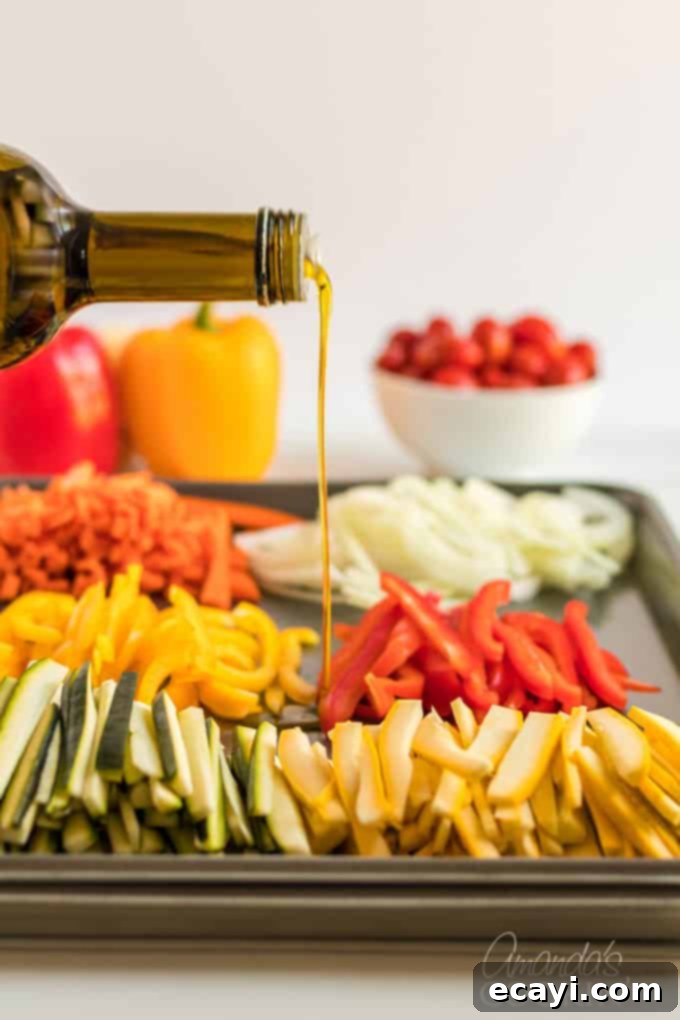
- **Season and Coat the Vegetables:** Place all the julienned vegetables, excluding the cherry tomatoes, onto one large, heavy-duty baking sheet. Drizzle generously with olive oil. Sprinkle with your chosen dried herbs (Italian seasoning or Herbes de Provence), kosher salt, and freshly ground black pepper. Use your hands or tongs to toss everything together thoroughly, ensuring every piece of vegetable is evenly coated with the oil and seasonings. Proper coating is essential for even roasting and maximum flavor development.
- **Roast to Perfection:** To ensure optimal roasting and browning, avoid overcrowding the baking sheet. If necessary, move half of your seasoned vegetable mixture to a second baking sheet. Place both sheets in the preheated oven. Roast until the carrots are tender, and all the vegetables begin to soften and develop a lovely golden-brown char. While not strictly required, flipping or stirring the vegetables after the first 10 minutes can promote more uniform cooking and browning. The total roasting time will be approximately 20 minutes, but keep an eye on them, as oven temperatures can vary.
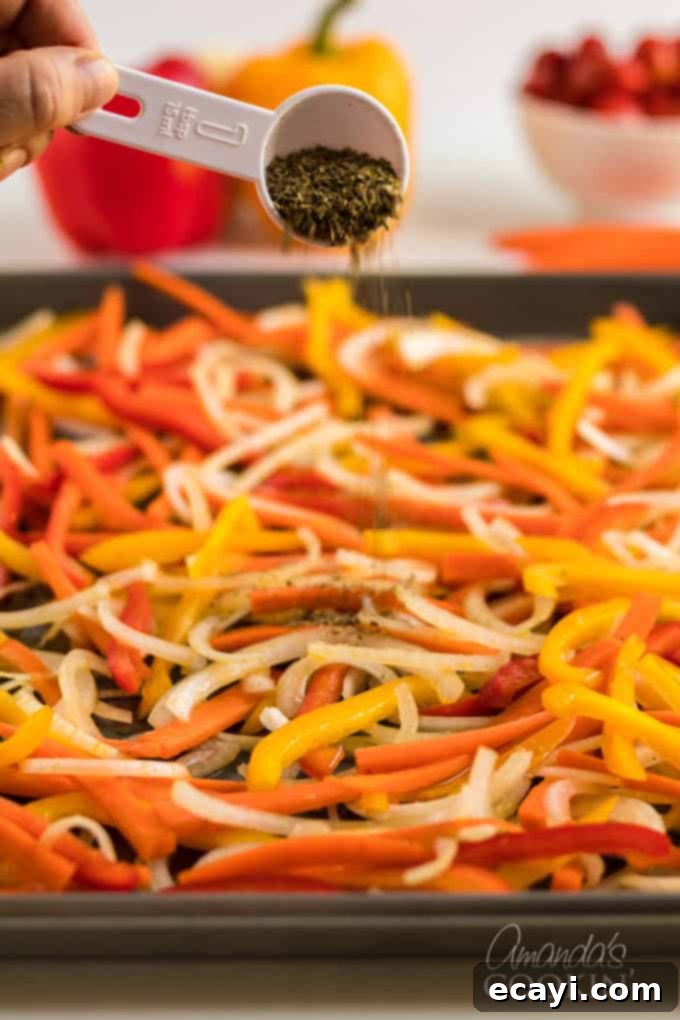
- **Cook the Pasta and Reserve Water:** While your vegetables are roasting, add your chosen pasta to the boiling water. Cook according to package directions until it reaches an al dente texture – firm to the bite but not hard. This usually takes about 7-8 minutes. Before draining the pasta in a colander, be sure to reserve at least one cup of the starchy pasta water. This “liquid gold” is crucial for creating a silky, flavorful, light sauce that binds the dish together.
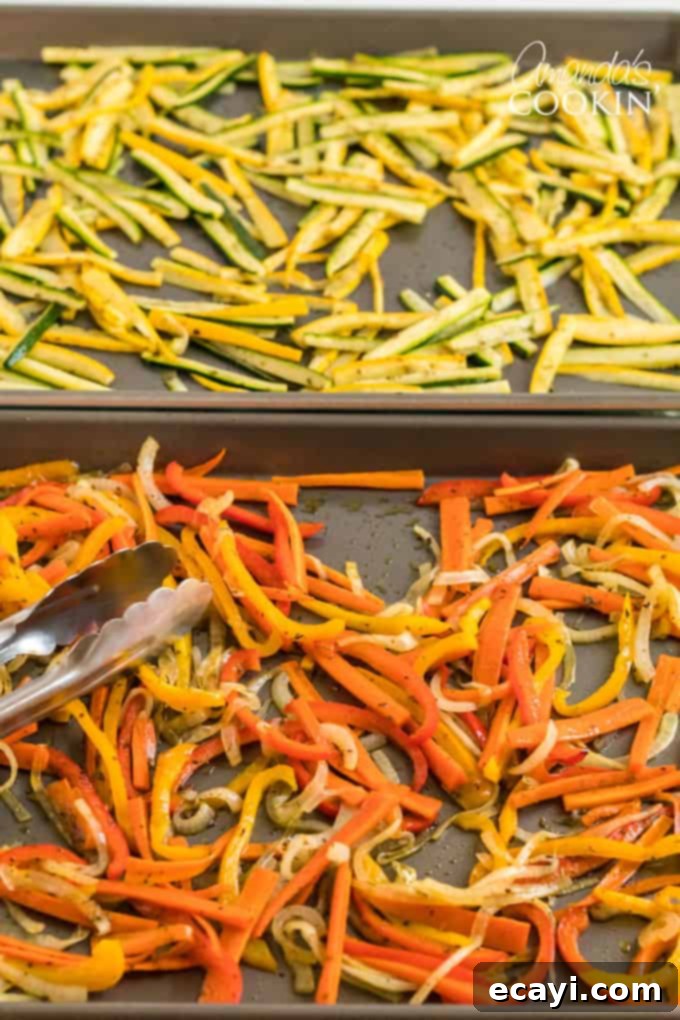
- **Combine and Serve:** In a large mixing bowl, combine the hot, drained pasta with the freshly roasted vegetables. Add the halved cherry tomatoes. Gradually add just enough of the reserved pasta water, tossing continually, until the dish reaches your desired consistency – a light, moist coating that beautifully clings to the pasta and vegetables. The starch in the pasta water helps to emulsify with the olive oil, creating a luscious “sauce.” Taste and adjust seasoning with additional salt and pepper as needed. Finally, sprinkle generously with freshly grated Parmesan cheese and serve immediately for the best experience.
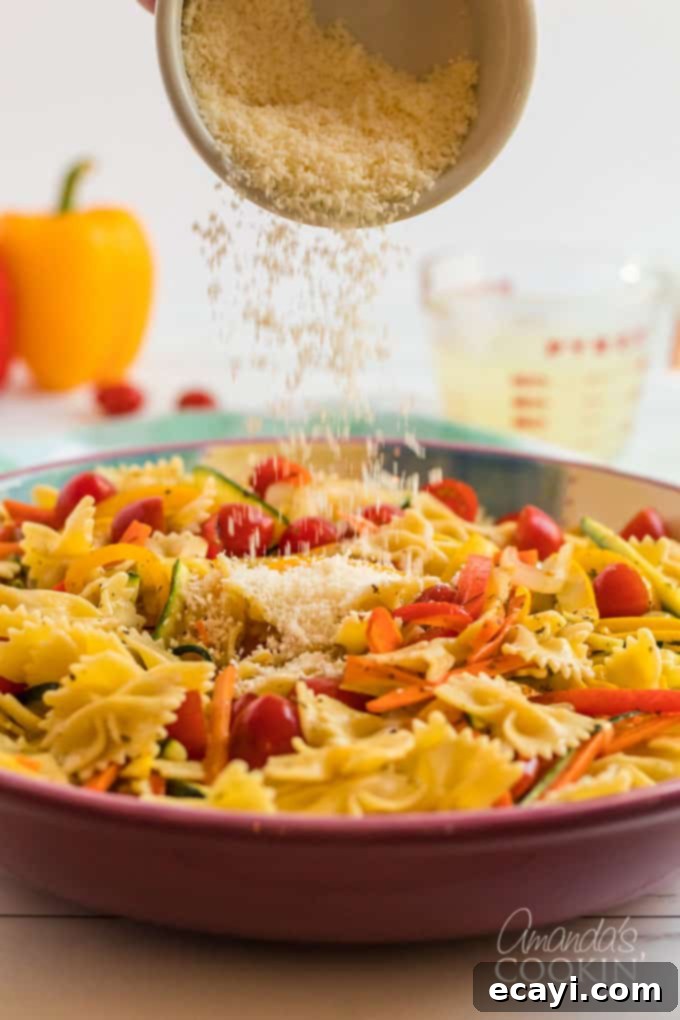
Pasta Primavera is more than just a meal; it’s a celebration of fresh, wholesome ingredients transformed into a healthy, satisfying, and utterly delicious dish that everyone in the family will adore. It’s a fantastic and flavorful strategy to effortlessly incorporate more vegetables into your family’s diet, making healthy eating a joyous occasion. While this recipe shines as a vegetarian delight, its versatility means you can easily customize it to suit various preferences. If you’re not strictly adhering to a meatless meal, consider adding some lean protein: perfectly sliced grilled chicken, succulent sautéed shrimp, or even some crispy pan-seared tofu can elevate the dish, adding another layer of texture and richness without overpowering the fresh vegetable flavors. The possibilities for personalization are endless, ensuring Pasta Primavera can become a beloved staple in your culinary repertoire.
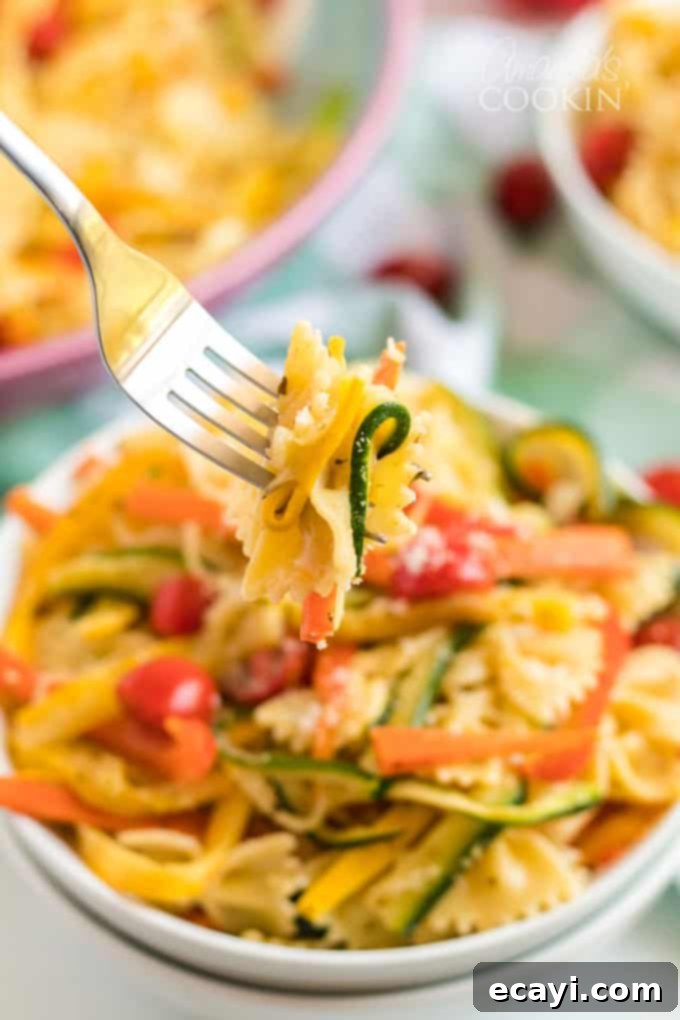
Variations and Customizations
One of the greatest charms of Pasta Primavera is its incredible flexibility. Don’t feel limited to the vegetables listed above; think of them as a starting point. Asparagus, broccoli florets, snap peas, mushrooms, or even thinly sliced fennel can all be fantastic additions. For a touch of creaminess without a heavy sauce, consider stirring in a spoonful of mascarpone cheese or a splash of heavy cream at the end, along with the pasta water. You could also experiment with different herbs like fresh basil or oregano. If you’re looking to boost the protein content, grilled salmon or chickpeas make excellent plant-based additions. For a vegan version, simply omit the Parmesan cheese or use a high-quality vegan Parmesan alternative.
Tips for the Best Pasta Primavera
- **Freshness is Key:** Always use the freshest, highest-quality vegetables you can find. This dish truly highlights their natural flavors.
- **Don’t Overcrowd the Pan:** When roasting vegetables, ensure they have enough space on the baking sheet. Overcrowding leads to steaming instead of roasting, preventing that delicious caramelization.
- **Cook Pasta Al Dente:** Pasta Primavera is best with pasta that is perfectly al dente, offering a pleasant chew that contrasts beautifully with the tender vegetables.
- **Embrace Pasta Water:** Never underestimate the power of reserved pasta water! It’s essential for creating a light, emulsified sauce that coats the pasta and vegetables.
- **Season Generously:** Taste and season throughout the cooking process. Vegetables need proper seasoning to truly shine.
Serving Suggestions
Pasta Primavera is a complete meal on its own, but it pairs wonderfully with a few simple accompaniments. A crisp green salad with a light vinaigrette makes for a refreshing side, while a basket of warm, crusty bread is perfect for soaking up any lingering flavors. A glass of dry white wine or a sparkling lemonade would also complement the lightness of the dish beautifully.
Frequently Asked Questions (FAQs)
Here are some common questions about making Pasta Primavera:
What does “Primavera” mean?
“Primavera” is Italian for “spring.” In culinary terms, Pasta Primavera refers to a dish made with pasta and an abundance of fresh, seasonal vegetables, typically those available in spring.
Can I use frozen vegetables for Pasta Primavera?
While fresh vegetables are highly recommended for their texture and vibrant flavor, you can use frozen vegetables in a pinch. Opt for blends designed for stir-fries or roasting, and ensure they are thawed and patted dry before roasting to prevent excess moisture.
What kind of pasta is best for Primavera?
Medium-sized pasta shapes with crevices or broad surfaces work best, as they can hold onto the vegetables and light sauce. Farfalle (bowtie), penne, fusilli, orecchiette, or even linguine are excellent choices.
How can I make this Pasta Primavera recipe vegan?
To make this recipe entirely vegan, simply omit the freshly grated Parmesan cheese or substitute it with a high-quality plant-based Parmesan alternative. The rest of the ingredients are naturally vegan-friendly.
How do I store leftovers, and how long do they last?
Store any leftover Pasta Primavera in an airtight container in the refrigerator for up to 3-4 days. To reheat, you can gently warm it in a skillet over medium heat, adding a splash of vegetable broth or water to re-moisten the pasta and vegetables.
Can I add protein to Pasta Primavera?
Absolutely! This dish is highly adaptable. Cooked chicken breast (grilled or shredded), sautéed shrimp, chickpeas, cannellini beans, or even pan-seared halloumi cheese are fantastic additions to boost the protein content.
Why roast the vegetables instead of sautéing or steaming?
Roasting at a high temperature brings out the natural sweetness of the vegetables through caramelization, creating a more intense and complex flavor profile. It also gives them a pleasant tender-crisp texture that steaming or sautéing often can’t achieve as effectively.
Do I have to julienne the vegetables?
While julienning is traditional and helps vegetables cook evenly and blend well with the pasta, you can certainly cut them into other small, uniform shapes like diced or thinly sliced if you prefer. The goal is consistent sizing for even cooking.
If you love pasta as much as we do, you’ll really want to try this Mushroom Stroganoff, our Tuna Noodle Skillet, and of course our classic Spaghetti and Meatballs! These recipes offer a diverse range of pasta experiences, from creamy and savory to comforting and classic.
More Delicious Pasta Recipes to Explore
Beyond our cherished Pasta Primavera, the world of pasta offers an endless array of flavors and textures. Here are some other fantastic pasta dishes you might enjoy adding to your meal rotation:
- Pasta Primavera (Another fantastic version for inspiration!)
- Chicken Alfredo (Rich and creamy, a true comfort food classic.)
- Bolognese Sauce (A hearty, slow-cooked meat sauce, perfect with penne or tagliatelle.)
- Mushroom Ravioli (Elegant and earthy, a delightful vegetarian option.)
- Sun Dried Tomato Pesto (A vibrant, intensely flavorful pesto for any pasta.)
- Simple Zucchini Tomato Pasta (A light and fresh weeknight favorite.)
- Shrimp Pasta (Quick, delicious, and sophisticated enough for company.)
- Pasta Carbonara (A Roman classic with silky eggs, cheese, and guanciale.)
